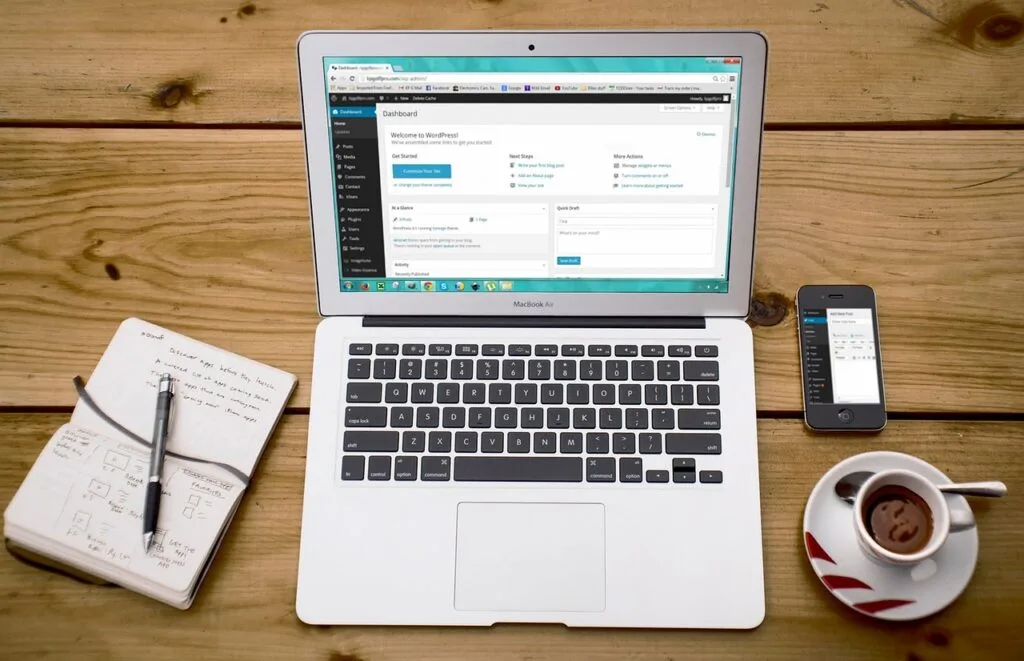In the dynamically evolving landscape of digital marketing, influencer marketing has emerged as a powerful tool for brands aiming to add authenticity and human touch to their messaging. However, the key to maximizing the impact of any influencer marketing strategy lies in understanding and integrating user feedback. This feedback, gathered directly from the audiences engaging with influencer-driven content, offers invaluable insights, helping brands to refine their approaches, optimize campaigns, and drive more profound engagements. In this comprehensive guide, we’ll explore the integral role of user feedback in shaping a more effective influencer marketing strategy. Whether you’re a startup venturing into influencer marketing for the first time or a seasoned brand looking to amplify your existing campaigns, understanding how to harness user feedback can be your secret weapon in achieving unparalleled success.
Gathering User Feedback: The Foundations
Why User Feedback Matters
User feedback forms the cornerstone of customer-centric marketing. It helps brands understand how their products or services are perceived and how effectively their influencer collaborations are resonating with the target audience. This information is crucial not just for gauging current campaign success but also for shaping future strategies.
Tools and Techniques for Gathering Feedback
Several tools and techniques can be employed to gather user feedback, ranging from social media listening tools, surveys, and feedback forms to interactive content such as polls and Q&A sessions on social media platforms. Each of these tools serves a different purpose and provides varying insights into the user’s mind.
Analyzing Feedback for Actionable Insights
Qualitative vs. Quantitative Feedback
Analyzing feedback requires a nuanced approach, distinguishing between quantitative data (like engagement rates, click-through rates) and qualitative insights (such as comments, direct messages). Both forms of data are crucial for drawing a complete picture of a campaign’s impact.
Using Feedback to Understand Audience Preferences
User feedback is a goldmine of information about audience preferences. For instance, certain types of content may elicit more engagement or positive sentiment, indicating the kind of messaging or influencer persona your audience relates to the most.
Implementing Feedback to Refine Strategy
Tailoring Content and Messaging
Insights derived from user feedback should directly influence the kind of content created and the messaging used. If your audience shows a preference for authentic, behind-the-scenes content, for example, it’s a sign to steer your influencer content in that direction.
Selecting the Right Influencers
Feedback can also guide you in choosing influencers whose followers best resonate with your brand ethos and messaging. Aligning with influencers who share an audience demographic similar to your target market can significantly boost campaign effectiveness.
Engaging with User Feedback: Building a Two-Way Conversation
Responding to Feedback
Responding to user feedback, especially on social media platforms, can foster a sense of community and loyalty. A brand that listens and reacts to its audience is often perceived as more relatable and trustworthy.
Encouraging Continuous Feedback
Make feedback an ongoing process. Regular interaction with your audience keeps you in tune with their changing preferences and expectations, allowing for a continually evolving and improving influencer marketing strategy.
Detailed Exploration of Subheadings
Maximizing the Potential of Tools in Feedback Collection
To dig deeper, understanding and effectively utilizing feedback collection tools is essential. Social media listening tools, for example, can track mentions and sentiment across platforms, giving a broader picture of audience reaction beyond direct engagements with your content. Surveys, when designed with specific goals in mind, can yield insights into the nuances of consumer behavior and preferences, informing not just influencer selection but also content themes and campaign timing.
Advanced Techniques in Analyzing User Feedback
Moving beyond basic analysis, employing advanced data analytics techniques like sentiment analysis and trend forecasting can uncover deeper insights from both qualitative and quantitative feedback. This advanced analysis can reveal not just how audiences feel about a particular campaign or influencer but can also predict future behaviors and preferences, giving brands a strategic edge in planning upcoming campaigns.
Personalizing Content Based on User Feedback
Personalization, driven by user feedback, can significantly enhance influencer marketing effectiveness. For example, if users frequently ask questions about how to use a product in real life, creating influencer content that addresses these questions can make the audience feel heard and valued. This approach not only boosts engagement but also strengthens the influencer-audience-brand relationship.
Selecting Influencers Aligned with User Feedback
The process of selecting influencers should be intrinsically tied to user feedback. Analyzing audience preferences for certain types of influencers – whether it’s based on their authenticity, expertise, or entertainment value – should inform future collaborations. Matching influencer persona with audience expectations is key to ensuring that the influencer’s content resonates and drives engagement.
The Impact of Real-Time Engagement with Feedback
Engaging with feedback in real time, especially during live events or when responding to comments and messages, can amplify the perceived authenticity and responsiveness of a brand. This immediate engagement shows the audience that their opinions and interactions matter, deepening their connection with the brand and the influencer.
Strategies for Encouraging Ongoing Feedback
To maintain a steady flow of user feedback, brands can implement strategies like regular check-ins, creating community forums, or incentivizing feedback through contests and giveaways. This approach not only keeps the communication channel open but also builds a community around the brand, which is invaluable for long-term brand loyalty and advocacy.

Related: Check out our free SEO suite

Enhancing Influencer Marketing Through Strategic Feedback Utilization
Developing a Feedback-Oriented Influencer Profile
To further refine influencer marketing strategies, creating an influencer profile that heavily weighs audience feedback is critical. This involves analyzing what types of influencers receive positive feedback in your domain. Are they industry experts, celebrities, or micro-influencers with niche followings? Understanding the attributes that align with positive feedback helps in pinpointing the right influencers for future campaigns.
Integrating User Feedback into Creative Campaign Development
Incorporating user feedback into the creative process of campaign development can result in content that resonates more deeply with audiences. This might mean adapting the tone, style, or even the platform based on user preferences. For example, if feedback indicates a growing interest in sustainability, incorporating this theme into your influencer content can make campaigns more relevant and engaging.
Leveraging Feedback for Cross-Channel Marketing Consistency
User feedback can be pivotal in ensuring consistency across various marketing channels. If your audience responds positively to a particular influencer or content style on Instagram, consider mirroring these elements in your other marketing channels, like email newsletters or website content, to maintain a cohesive brand narrative.
Predictive Analysis for Future Campaigns Based on Feedback Trends
Analyzing feedback trends helps in predictive analysis for future campaigns. If there’s a growing trend of positive feedback towards certain content types or influencers, it could signal the rising popularity of these elements. Brands can capitalize on these insights to stay ahead of the curve in their future influencer collaborations.
Feedback-Driven Customization of Influencer Content
Customization of influencer content based on feedback is another critical aspect. If users show a preference for more detailed how-to videos or behind-the-scenes looks, brands should work with influencers to tailor content accordingly. This level of customization not only satisfies the audience’s preferences but also enhances the content’s relevance and impact.
Influencer Feedback as a Tool for Brand Evolution
The feedback received not only serves to optimize influencer campaigns but can also guide broader brand evolution. Insights gathered about preferences, pain points, and aspirations can inform product development, customer service approaches, and overall brand messaging.
Measuring and Scaling the Impact of Feedback-Driven Strategies
Finally, it’s essential to measure the impact of these feedback-driven strategies. This involves tracking engagement rates, conversion metrics, and overall campaign performance against previous strategies. Utilizing A/B testing can be an effective way to gauge the success of incorporating user feedback into influencer marketing campaigns.
Advanced Tactics in Utilizing User Feedback for Influencer Marketing
Segmenting Audience Feedback for Tailored Marketing
Delving deeper into the nuances of feedback utilization, segmenting audience responses can unlock more personalized influencer marketing strategies. Different segments of your audience might react differently to various influencers or content types. For instance, younger demographics might resonate more with trendy, dynamic content, while older groups prefer detailed, informative posts. Segmenting feedback allows brands to customize their influencer collaborations and content to suit diverse audience preferences.
Utilizing Negative Feedback Constructively
Negative feedback, though often daunting, can be incredibly valuable. It provides direct insights into what’s not working and offers an opportunity to rectify issues. Brands should analyze negative comments to understand common pain points or dislikes. This information can guide modifications in campaign strategies or even influencer selections to better align with audience expectations.
Feedback Loops in Long-term Influencer Relationships
Establishing feedback loops is crucial in maintaining long-term relationships with influencers. Regular check-ins and discussions about audience responses can help both the brand and the influencer evolve and adapt their strategies. This collaboration ensures that both parties remain aligned with the target audience’s changing preferences and the overall market trends.
Integrating Feedback with Influencer Analytics
Combining user feedback with hard data from influencer analytics presents a fuller picture of campaign performance. While analytics can show you how much engagement a post received, feedback can tell you why it received that engagement. This combination is powerful for fine-tuning both current and future influencer marketing initiatives.
Predictive Feedback Analysis for Trend Forecasting
Moving towards a more predictive approach, analyzing feedback trends over time can help forecast future market and consumer behavior trends. For instance, a steady increase in positive responses to eco-friendly products or sustainability practices can indicate a shift in consumer values, guiding brands to position themselves accordingly in the market.
Real-Time Feedback for Agile Marketing
In today’s fast-paced digital world, leveraging real-time feedback can give brands a significant competitive edge. Agile marketing, where strategies are rapidly adapted based on the latest feedback, allows brands to stay relevant and engage with trends as they happen. This could mean jumping onto viral challenges, using trending hashtags, or addressing current events through influencer collaborations.
Integrating Feedback into Omnichannel Strategies
Lastly, integrating feedback into an omnichannel strategy ensures a unified brand experience. Feedback shouldn’t just influence the influencer marketing silo but should be used to inform brand messaging, customer service, product development, and other marketing efforts across all channels. This holistic approach ensures that the brand resonates with its audience consistently, no matter the platform or touchpoint.
Conclusion
As we wrap up our exploration of leveraging user feedback in influencer marketing, it’s clear that feedback is much more than just comments and likes. It’s a strategic tool that, when used creatively and systematically, can significantly elevate influencer marketing efforts. Whether through tailoring content to audience segments, turning negative feedback into opportunities for improvement, or integrating insights into omnichannel strategies, the focus should always be on building a resonant and authentic connection with your audience. In doing so, brands not only boost their influencer marketing outcomes but also forge deeper, more meaningful relationships with their customers.
READ NEXT:
- The Role of Interactive Content in Enhancing Influencer Marketing Campaigns
- Influencer Marketing for the Entertainment Industry: Collaborating with Celebrities and Artists
- The Power of Retargeting in Influencer Marketing: Re-engaging Potential Collaborators
- 10X Your Digital Marketing Now! Skyrocket Your Leads in 30 Days
- Interactive Content Can Skyrocket Your Lead Capture. We Show How!






















Comments are closed.